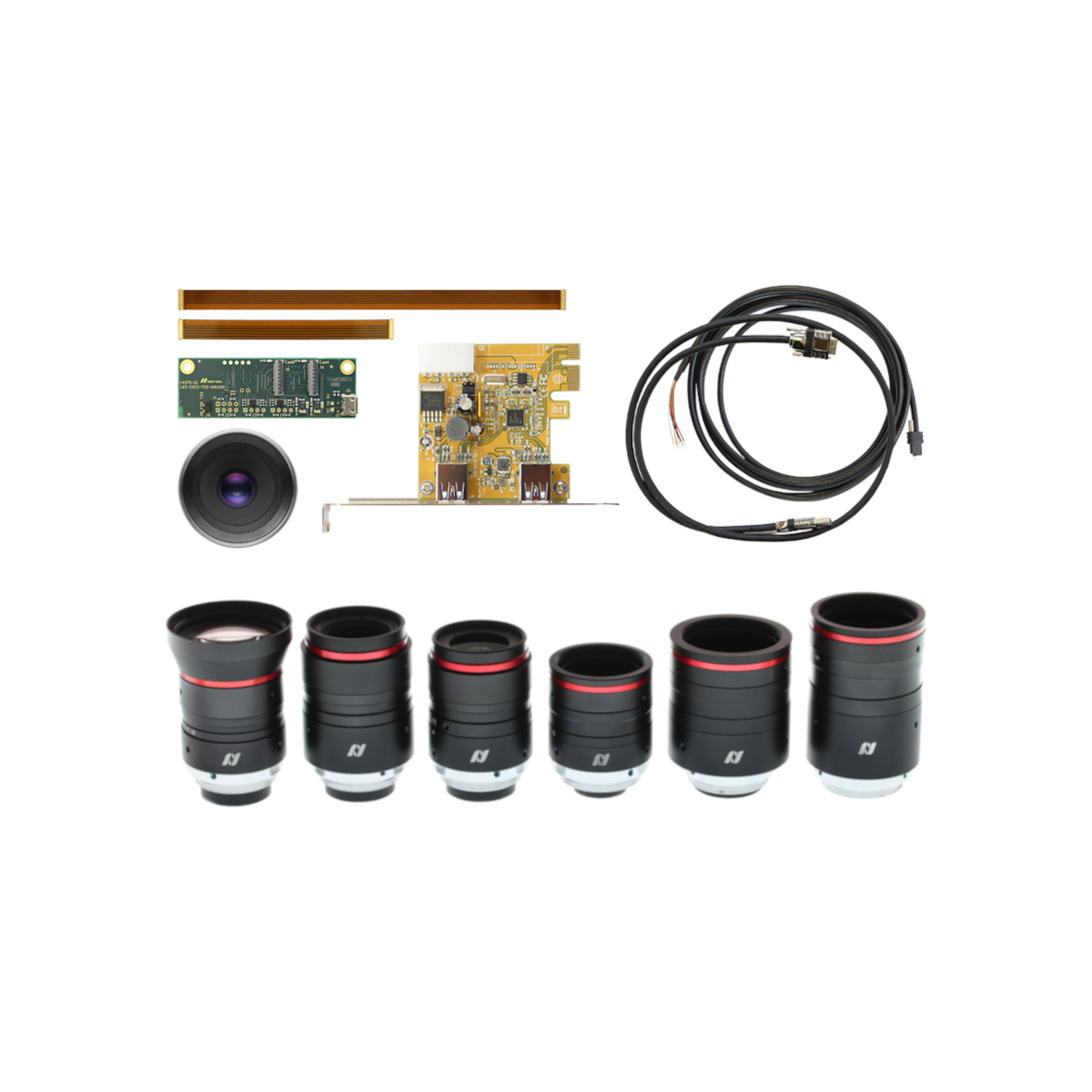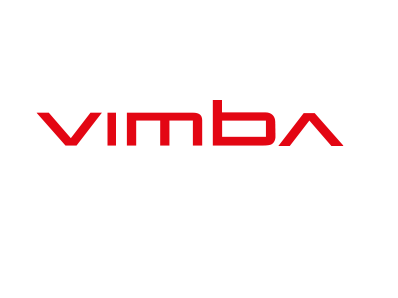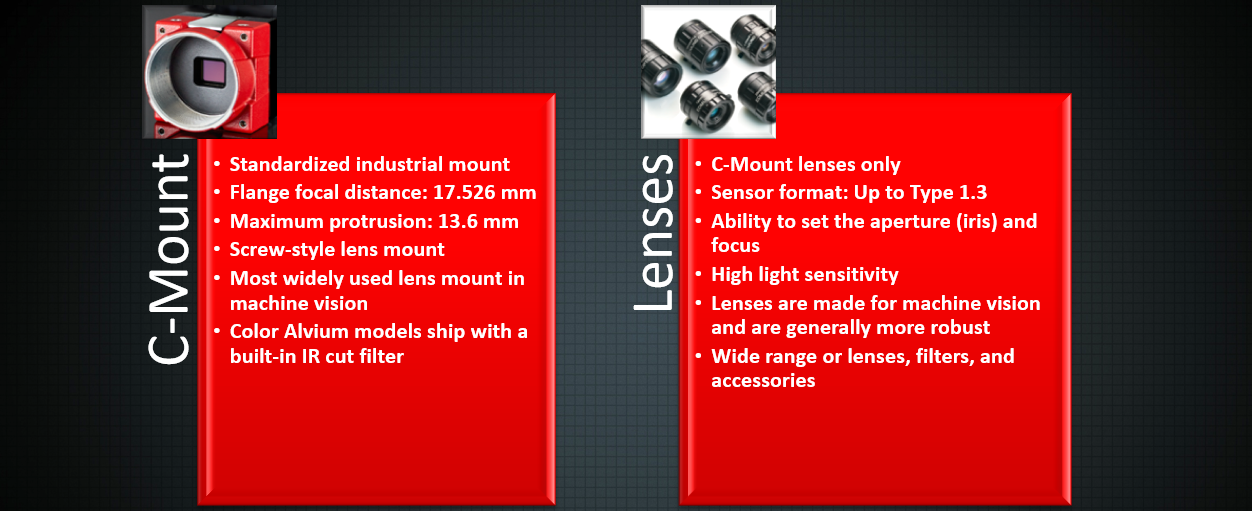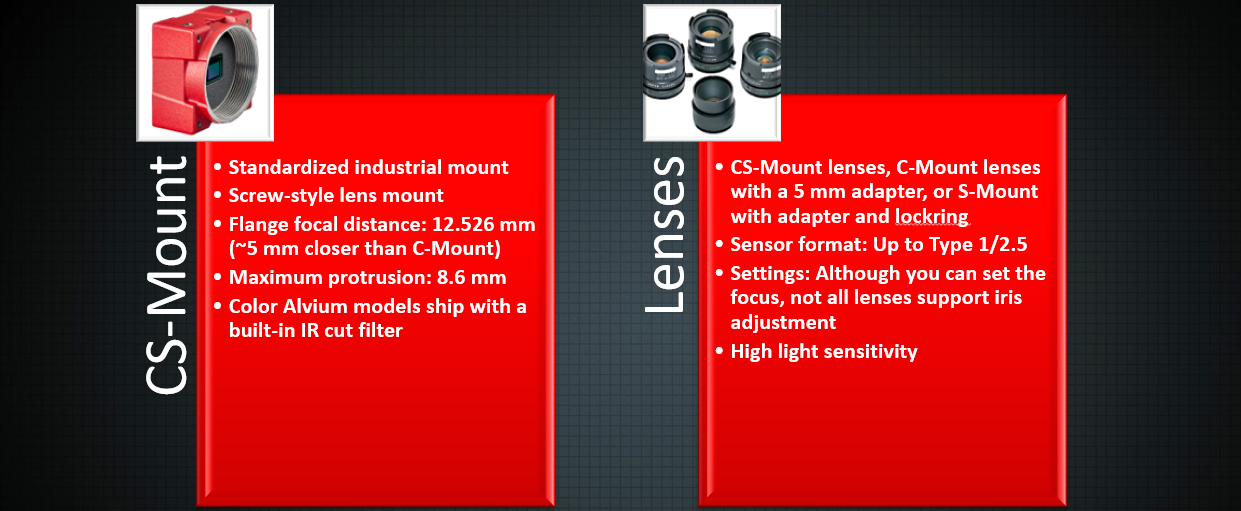What are the differences between S-Mount, CS-Mount, and C-Mount and the benefits of each mount?
One of your first decisions when selecting a camera for your vision system is deciding on the lens mount. But what are the differences between C-Mount, CS-Mount, and S-Mount. What are the benefits of one lens mount versus another lens mount. Either way, you need a lens mount to attach the lens to the camera. Regardless of the lens mount, every Alvium camera offers the same highly accurate sensor alignment to create crisp images even at the edges.
All three lens mounts are screw-style lens mounts and offer a secure lens connection to the camera. Although with S-Mount, you must use a locking nut to secure the lens to the mount.
C-Mount
So lets start with C-Mount. C-Mount is the most popular lens mount in the machine vision ecosystem. One of the main benefits of this is that there is a very wide range of lenses, filters, and other accessories available. It's easy to find a lens with specific characteristics to match your vision application needs. There is also a lot of new lens technology options in C-Mount lenses including new liquid lens which provide quick autofocus.
C-Mount is suitable for sensors up to Type 1.3 or 24 mm diagonal (so any Alvium model).
C-Mount lenses are designed for machine vision and are often more robust compared to S-Mount and CS-Mount. Many lenses have a wide temperature range or enhanced shock and vibration tolerances. Although there are C-Mount to S-Mount adapters on the market, there is a limited range of compatible lenses.
S-Mount
S-Mount is a popular lens mount in embedded vision systems due to its very compact form-factor and inexpensive (good value) lenses. Due to its small size, it is only suitable for sensors up to Type 2/3, although this is also lens dependent. With larger sensors, you will experience vignetting around the edges of the image.
With C-Mount and CS-Mount lenses, you just need to confirm the mount type, the sensor format, and the megapixel rating to get an image. For S-Mount, you need additional tests to check where the lens is in the camera body when focused at the object. The lens may protrude too much or not at all. This may be an issue when using a locking nut to fix the lens in place.
CS-Mount
What about CS-Mount? Historically CS-Mount was a popular lens mount security applications but less so in machine vision applications. From a form-factor stance, CS-Mount lenses are 5mm shorter, meaning that the lens is closer to the image sensor. It is possible to use a C-Mount or S-Mount lens with CS-Mount provided you use the appropriate lens adapter. Although many lenses allow you to set the focus, you can't always adjust the iris. CS-Mount lenses are often mass produced and provide decent quality for the price. It is possible to find higher quality lenses which use aspherical lens technology.
Still confused about which lens mount to select? Contact us today to discuss your vision application and requirements and one of our vision experts can help you figure out which lens mount, lens, filter, or other camera accessories are right for your application.











